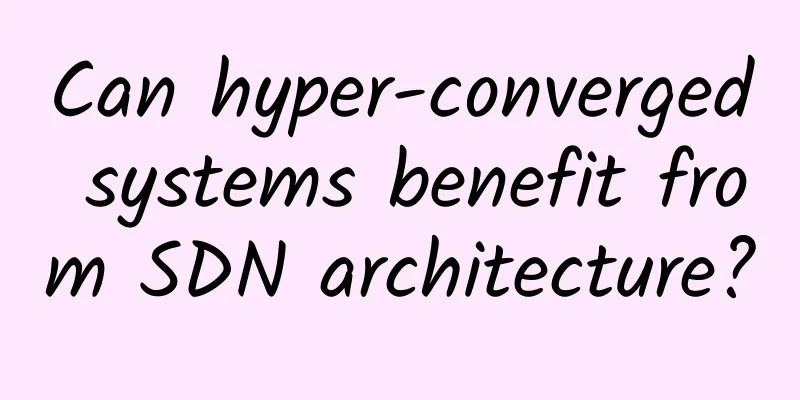Data Center Strategic Evolution

|
With the advent of cloud computing, many industry professionals claim that the demise of in-house IT is inevitable. However, a recent study found a different story when it came to data centers. IT teams are addressing higher-level business needs Although it is not new that IT departments need to keep up with and support the development of business changes in real time, this situation has become more and more common recently. Due to the impact of digital transformation, in the process of implementing new business practices, new technologies need to be continuously provided to cope with the development of needs. The rapid development of technology has brought us to a new era. It is worth noting that the current focus on applications is on the availability of applications 24/7. The feedback speed of applications needs to be improved, of course, on the premise of ensuring the stable operation of the applications themselves, and at the same time, it will not increase operating costs.
Cloud computing continues to play a role, and data centers remain important There is no doubt that public cloud services are finding their place in the IT delivery landscape alongside traditional managed services, and now in combination with traditional colocation data centers. The general consensus is that, despite the many benefits that cloud services bring us, they also bring their own set of challenges and complexities. As a result, few people tell us that a large-scale shift to the public cloud is planned. Research shows that most companies will use hybrid IT in the future, and data centers will remain important. In this case, various forms of cloud services and traditional hosting data centers will be used in a mixed manner to meet a variety of application usage and different service requirements. Under such conditions, the most important thing is that the data center can cope with IT delivery requirements. Data centers must be prioritized Although external cloud services may not be destined to consume the entire enterprise IT, many organizations want the security, flexibility, efficiency and responsiveness that come with running in their own data centers. In fact, cloud services have carried too much expectations and can only continue to move forward. With this in mind, some priorities are highlighted in terms of data center development. The data center environment has become more user-friendly and more flexible, which also applies to the core IT infrastructure and facilities such as power and cooling equipment that support it. Better cost control is a priority for data centers. It is beyond doubt that we need to further improve data center energy efficiency. The energy efficiency issue is related to regulation and the opinions of customers and shareholders. Some professionals believe that the opinions of customers and shareholders play a vital role in the sustainable development and energy-saving development of data centers. Continuous change and investment to meet changing needs About half of the surveyed respondents believe that the core IT infrastructure needs to be further strengthened, and in terms of equipment such as power and cooling, the data shows that two-thirds of industry professionals believe that this area needs to be further strengthened. The report highlights various modernization initiatives, including investments in private and hybrid cloud architectures, which is consistent with the general industry trend towards a more software-defined data center environment. When it comes to energy efficiency, many people believe that it is a race to keep changing. There is no doubt that infrastructure needs to be regularly upgraded to meet today's technological needs. The expectation of reliability and flexibility of facilities is more important than the availability of technology. Whether it is considering energy saving and operating costs in the design, or quickly handling power-related failures to effectively avoid business interruptions, the general view is that it is necessary to continuously learn relevant expertise in practice to cope with the problems constantly encountered in data centers. In this context, modern software tools are increasingly seen as key enablers through the power management process (from initial modeling, ongoing monitoring and management) to a more planned and automated response to incidents and failures to avoid outages. Like many other aspects of IT, power management will become a software-defined activity over time. 82% of industry professionals believe that the development of important business of enterprises depends on IT In the following pages, we present a collection of insights, comments, and quotes drawn from in-depth interviews with a group of experienced senior people closely involved in IT and business strategy. As we will see, these findings make it abundantly clear that the enterprise data center not only exists and works well, but is increasingly being viewed as critical to success in a fast-moving digital world. The following provides a great backdrop for our discussion: “Data centers are no longer just places to house IT equipment, they are strategic assets that help businesses differentiate. We view our data centers as core business assets.” As we explore the details behind these high-level statements, we’ll touch on some of the strategic drivers and imperatives, common issues and challenges, and the kinds of initiatives and measures that can help drive often-needed change. “Sustainability is an important consideration at the corporate, corporate and organizational level, and we take energy conservation very seriously. Customers and shareholders expect us to deliver on these values; they want more than just talk and good intentions.” “Most of the pressure for energy efficiency and transparency comes from investors rather than regulators. We get a lot of questions from them on this front right now, often quite in-depth. It’s about being able to show our social responsibility credentials.” We will see issues around risk and flexibility in power management. In the meantime, it is worth considering what is the business environment in our data center? Business Environment The senior people we spoke to during our research generally came from the IT side of the industry, but during the interviews, as the conversation unfolded, it became clear that most of them had a pretty good grasp of what was going on in their company. In a few cases, individuals actually crossed the traditional IT/business divide. “I lead the data center strategy side of things, but I’m also part of the business management team because the two are very closely linked. On the topic of business drivers, the theme of ‘digital transformation’ is very relevant to core business, customer engagement and workplace transformation: “We are seeing a huge shift in digital business. Voice over IP and multimedia is making us rethink how we approach data center networking and communications.” Other factors that put pressure on IT seem not so unimportant. For example, regulatory regimes are an obvious example. “The reality is that translating regulatory requirements into physical infrastructure is often difficult. When you are told ‘you should have enough flexibility’, how do you understand what that means? “Security is somewhat constrained by privacy regulations, but protecting an organization’s information and intellectual property is also a top business priority. Finally, it is important to emphasize that, despite regulatory requirements that need to be addressed as quickly as possible, most issues in IT today are directly related to business risk issues. The most frequently involved area, which is a challenge for many industry professionals, is the availability of applications in the 24/7 digital world. “The biggest challenge is how to manage application-level SLAs.” “We have a 24-hour service cycle – flexibility is not optional.” "Disaster recovery is critical." Some respondents were quite candid about shortcomings in this area. "Users don't want any service interruptions, but our current infrastructure sometimes requires shutting down systems for maintenance. We have to improve availability." Given the above pressures, why not just cancel all data centers and move to the cloud on a large scale? "Before going any further, let's look at the following question. Infrastructure hosting and colocation have been around for decades; the concept of running IT in someone else's data center is nothing new. There is no doubt that the use of such mature services remains attractive, and some organizations rely entirely on them. “A few years ago, we closed down all of our data centers and one of our computer rooms. We are now fully virtualized and run our own systems in 2 IDCs. The emergence of more cloud hosting options over the past few years has expanded the market, and some people clearly believe that running things exactly as they are is a way to meet their market needs. “We are moving everything to AWS.” It’s important to note, though, that such extremes are relatively unusual among the mid-sized and larger enterprises we studied. As it turns out, while 72% of respondents believe their data centers are still critical to the business, only 8% disagree. That said, the 20% who said a big shift to cloud and colocation is a “maybe” for the future represent an interesting group, several of whom we spoke to in our in-depth interviews. “The ERP system we use will not be supported after 2018. We may opt for a SaaS service to replace it, but we are still not sure if that will be possible for most applications. “When you’re using the cloud, it’s less predictable than you think.” So why the uncertainty? Well, the fact is that achieving the cloud computing promise of greater agility, flexibility, efficiency, cost savings, and more is not simple, especially in a complex enterprise environment. “The cloud has overcome some challenges, for example, it allows us to provision infrastructure very quickly. But it’s not perfect. We’re still working through some security and legal issues and haven’t completely lost full visibility and control.” “Using the cloud is a game of trade-offs. Some things become easier, then you’re caught out because you can’t do what you wish you could do. Not everything is automatically taken care of.” Such comments suggest that cloud computing use is generally on the rise and can often deliver benefits when used in the right way at the right time, but it is not generally viewed as a universal panacea. The future of cloud services is hybrid cloud Confirming the promises we've received from the enterprise data centers that run this data, several senior executives from vendors told us a similar story. "Some in the industry are concerned that cloud will become more popular, and we're hearing more about building and remodeling data centers than ever before. “We’re still providing a lot of data centers and co-working facilities. The demand for on-premises is certainly not going away. But that doesn’t mean cloud computing isn’t going to have an impact.” “Cloud services are having an impact on our data center strategy and hybrid IT is gaining some traction, but the majority of our investments are still tied to our own IT infrastructure.” What you get is that cloud computing in many ways is starting to change the way we think about IT delivery in a broader sense. Even if you're not committed to doing anything in the public cloud, you tend to want to emulate many of these aspects, not just moving to a more service-centric mindset and approach. “We’re now cross-billing based on machine ownership and usage, and more on the cost of providing application services. We’re moving to more of a SaaS mindset.” “We’re now thinking about data center services and cloud services, which will change the way you design and manage your environment.” The term "private cloud" refers to a cloud computing platform that runs inside a data center, however, in reality, in order to recognize the need to mix and match delivery models to meet different application needs, we are really talking about hybrid architectures. Here are some of the problems they solve. “We needed to connect public cloud services to allow us to maintain effective control internally. One of the important considerations was how to blend internal IT, private hosting and public cloud in a managed manner.” Enabling this capability and addressing the other pressures and imperatives identified earlier can be difficult if you are building an aging infrastructure that was primarily designed to support past IT delivery models. In the wider survey, around half of participants who felt change and investment was needed told us that their core IT infrastructure needed strengthening or in a short time overall, while the proportion related to equipment was closer to two-thirds. Sometimes data centers fall behind because of investment cycles; in other cases, it’s simply because funding is hard to come by. “We went through a big data center upgrade project four years ago, but haven’t done much since then.” “It’s hard to get investment even with a good business case. The ROI needs to be within three to six months. A payback of one to two years is too long.” Of course, in order to keep up with some of the pressures discussed earlier, sometimes expanding the data center footprint is unavoidable. “We are looking to build new data centers because, as the regulator has said, we need to build resilience. We are building two data centers from scratch on our own premises to meet the growing capacity needs.” Some of the people we spoke with are responding to growing demands not by opening new facilities, but by making additional investments to improve the efficiency of existing environments. Modern virtualized IT systems allow you to pack more computing power, storage capacity, and more into a smaller memory footprint, while cloud-based architectures improve resource utilization. Although investment is necessary to modernize, it is often worth it compared to the costs and constraints of living with an older environment. “We’re not planning to expand the number of data centers, but we need to keep accommodating more applications, so we need to be more efficient. Modernization costs money, but you need to do it.” “Modernization — replacing old equipment, refurbishing facilities, virtualizing and automating — can make it easier for you to consolidate and reduce operational costs, such as real estate, energy and manpower.” But it’s not just about core IT systems. As the last commentary points out, investing in supporting facilities infrastructure is also important. “Investing in facilities around power, cooling, racking, etc. is done to make the business case for modernization. This is important because of virtualization and changes in equipment density, energy ratings and increased resiliency requirements.” This led us to take a closer look at power management in data centers, as promised at the beginning. From an energy efficiency perspective, the energy efficiency of data centers is under pressure from two aspects. First, as the demand for data centers continues to escalate, it becomes more difficult to manage power usage effectiveness (PUE), electricity-related costs, and the overall carbon footprint of data centers. Second, we face pressure from enterprises, and many people are paying attention to energy efficiency issues again. “Our customers’ emphasis on energy savings waned after a while but is now back on, which has given us a renewed focus on energy efficiency as a competitive advantage.” “We are paying particular attention to power and cooling, as energy efficiency is becoming increasingly important to businesses. Despite this background, it is often difficult to get attention, collaboration and funding for actual practice to drive improvements. “Business pressures are driving down power consumption, but application and IT people don’t see that as their concern. They see it as someone else’s problem.” “I want to be more energy efficient, and there are a lot of possible actions we can take,” he said. “But it’s hard to get the investment, even if there’s an ROI case. But if you can do it, it seems worth it.” “The TCO difference between a well-designed and a poorly designed data center is zero, but the energy savings can be huge.” “Modernizing your data center power management facilities will happen faster than you think,” he said. “But if work related to core data center infrastructure is not to be disrupted, discipline will be needed elsewhere – especially among IT operations teams and software developers. “By installing IT equipment that is not well thought out, it may be possible to undermine cooling efficiency, thereby consuming unnecessary energy.” “Many of our applications are designed without regard for efficiency, such as computing power consumption. This has undoubtedly led to a lot of energy being wasted over the past few years. Finally, continuous monitoring and management are obviously key to improving energy efficiency, so having the right tools is very important. “Power monitoring and management tools are critical. Yes, they are an expense, but without them you are exposing yourself to more waste and risk than you need.” Power scalability In addition to energy efficiency issues, if your power management infrastructure is inadequate or outdated, the risk of failure and outages is high. "Too many data center managers use the same power management techniques as their parents did. Poor design not only means energy inefficiency, it also means more power-related outages." However, there was also a strong emergence during our interviews, and that was the human side. “One of the biggest issues was a lack of communication between teams. Skills are a challenge. I still don’t have the team I want. I use contractors but they move on so we always have gaps.” In this context, with such a high reliance on operator judgement, several of our respondents again mentioned the importance of modern software power management tools. These can help prevent errors from happening, for example through policy-driven automation. “Most outages are human error, and most human error is avoidable. Historically, the power of things has always been in the physical infrastructure, but now it’s building more intelligence into the system through software. ” “Unfortunately, this may create another skills gap that needs to be filled. “The increasing role of software has opened up a skills gap. This shift is taking power engineers out of their comfort zone. It’s difficult to hire people with the relevant skills, so we have to train people. They need to gain experience on the job.” “Lack of knowledge and training is an issue – people don’t know what they don’t know. The continued prominence of the skills and experience issue is something we hadn’t anticipated,” he said. “We knew it would come up in our discussions, but not to the extent it has. Addressing needs is clearly a priority for many, especially as vendors haven’t been fully forthcoming to help.” “Colocation services around data center facilities are still primarily maintenance and problem solving, dealing with one aspect of the installation or even one type of equipment. As systems become more complex and integrated, I think a more managed approach is needed, but such services are not easy to find.” Summarize One of the goals of this article is to add some of the strategic changes and imperatives that are unfolding at the business level, as well as the investments and developments that data centers need to make to meet the rapidly evolving needs. In doing so, we are careful to avoid the temptation to look for a silver bullet. While many industry pundits and industry insiders have proposed cloud services, software-defined data centers, and more as the answer to every challenge, the reality is that enterprise IT is too complex to enable such simple “solutions.” To prepare for the future, which many people have jobs to do, it is clear from the research that it is necessary to adopt a range of strategies, techniques, technologies and services to create an agile, robust and efficient operating environment. As we’ve seen, such comments don’t just apply to your core IT systems—the servers, storage, software, and so on that drive applications and bridge the gap between it and public cloud services. Attention also needs to be paid to facility infrastructure; the efficiency of power and cooling has a huge impact on operational costs, and the right tools and processes are critical to achieving resiliency for applications and services. As part of this process, a major change that is taking place is a shift in focus to monitoring and management software that can support policy-driven orchestration and management. In addition to the benefits of increased visibility, control and automation, investing in this area also addresses a lack of skills and experience. In terms of advice, as you look to modernize and improve your own data center environment, we would encourage you to do as we have done here and to walk the fine line, as closely as possible, between infrastructure investments and those strategic business requirements that business executives are more familiar with. |
<<: What is Far-End Crosstalk and Near-End Crosstalk
>>: Demystifying the elastic data center
Recommend
CMIVPS: US VPS monthly payment 60% off, annual payment 50% off, Seattle high-security AS4837 line optimization starting from $4/month
This month, CMIVPS is offering a limited special ...
How many meters can a network cable transmit at most? Several common classifications of network cables
Maximum distance of data transmission via network...
Google reports: CBRS deployments doubled from March to April
Google says demand for 3.5 GHz Citizens Broadband...
Eleven things to note when using natural cooling technology in data centers
The Green Grid, a non-profit organization dedicat...
Blockchain and what it means for big data
Blockchain is arguably one of the most significan...
"2021 Bots Automation Threat Report" in-depth analysis of the four characteristics and five scenarios of automation threats
As Bots automation tools become more platform-bas...
One of the most popular network protocols - LoRaWAN?
Communication and network protocols are an essent...
The Promise of the Open Web: Is It Really Delivered?
Open network switches began to emerge in 2013, cl...
TMThosting: Seattle high-security VPS monthly payment starts at $3.16, 20% off, supports Alipay
TMThosting is a foreign hosting company establish...
5G standards usher in new upgrades, driving development into a new stage
Industry development starts with standards. On th...
How to speed up banking business innovation through comprehensive real-time monitoring?
In recent years, with the gradual deepening of th...
NDRC: Accelerate the layout of new infrastructure such as 5G and the Internet of Things
On May 24, Ning Jizhe, deputy director of the Nat...
Tencent Cloud Light 1C2G3M is only 253 yuan (or 83 yuan/year) for three years, shared by new and old users
Tencent Cloud's Double 11 event is still vali...
Sharktech: Shark data center 1Gbps unlimited traffic server Denver from $49/month, Los Angeles from $59/month
Sharktech, also known as SK Data Center, is a lon...
Will 5G kill WiFi?
As 5G is about to be commercialized, more and mor...









